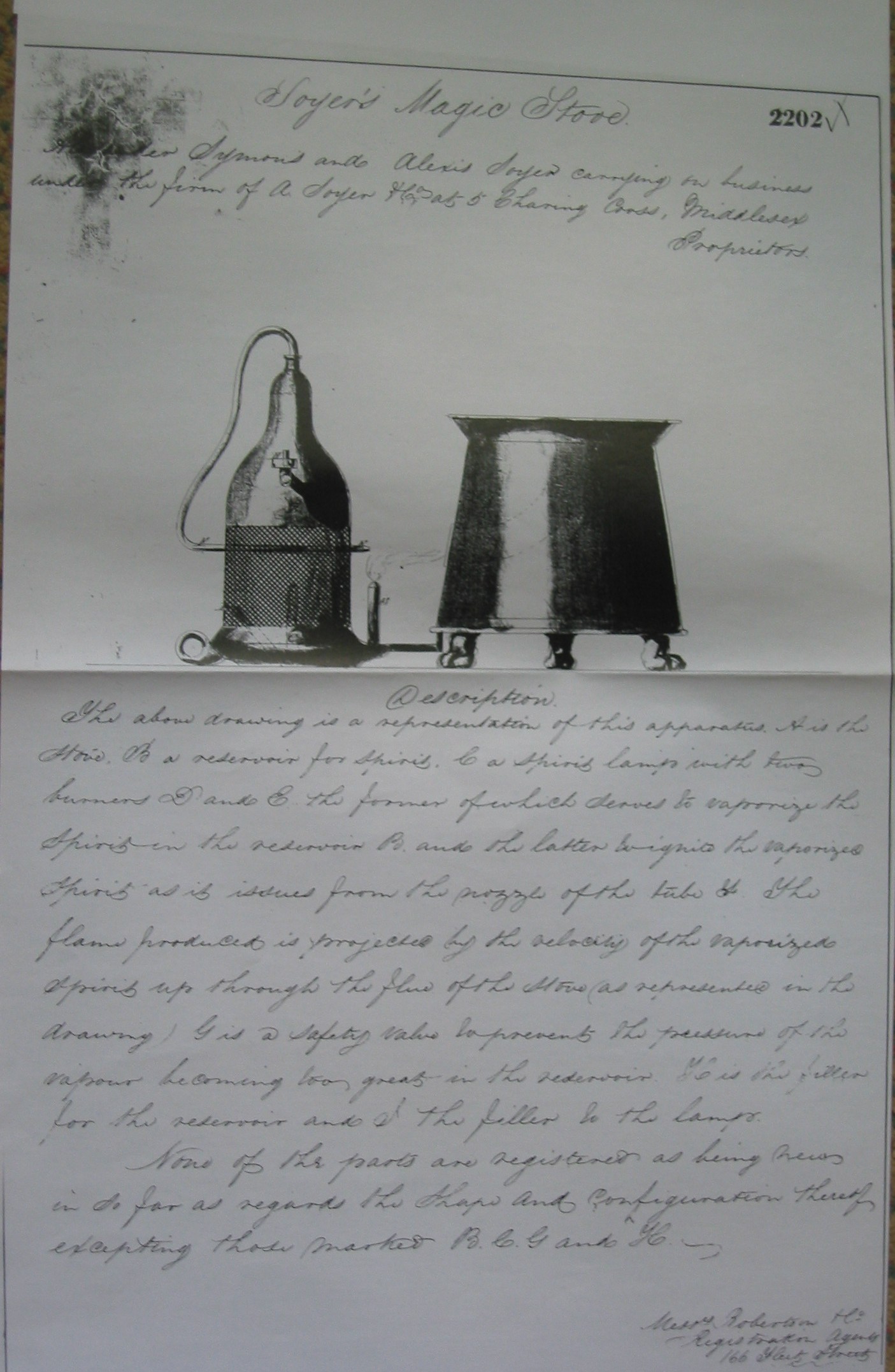
17 Aug Soyer’s Magic Stove or his Lilliputian Apparatus.
Soyer’s Magic Stove or his Lilliputian Apparatus.

Soyer’s Magic Stove or Lilliputian Apparatus May 1850.
If you asked a Victorian what the best year was it would be 1850. It was hard to keep up with the many new inventions, the improvements to their lifestyles. How steam had taken over from water as the main power source. How a character called Alexis Soyer brought them cooking by gas-stoves. He had them fitted into the Reform Club kitchens in 1841. He was the first person to cook with gas at an outside event. He did this on 18th July 1850 at The Royal Agricultural Show at Exeter. He cooked a baron of beef on a stove he had built in the grounds. It weighed 535lbs and took 4½ hours to cook. He insisted all the meat should be given to 800 poor people. People were impressed with cooking with gas previously they used charcoal burnt stoves or the open fire, so it was a clean way of cooking. Yet, still in the 1860s cooking books receipts were all mentioning cooking on flame even the art of making coffee still suggests boiling it on a wood fire as charcoal would impede the taste. Gas was only available in major towns, but a report on 2 December 1850 Daily News reports that as gas cookers were now appearing in some hotels and dwelling places, Soyer was complaining they are inferior to gas stoves he installed at the Reform Club because they did not use the same science. Just as people were hearing about cooking with a gas oven. In May 1850 Soyer also introduces the world to another style of cooking. His Magic Stove or as the media called it in the first year Soyer’s Lilliputian Stove.
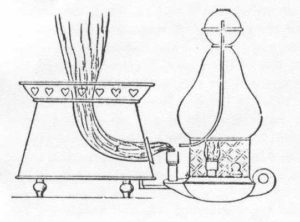
Drawing of Soyer’s Magic Stove that appeared in Newspapers
The Morning Post on 2nd May 1850 gave a full description in an article
The ever-inventive Soyer has just produced a complete bijou cooking apparatus. It is a species of copper with a furnace opening, and a flue passing from this opening near the bottom of one of the sides, through the middle, and up the centre to the top; on this top is placed a frying-pan, stew-pan, kettle, or coffee-pot. Adjoining the stove or copper is a vessel with two reservoirs for spirit, one at the bottom, and the other at the top. To the bottom reservoir are affixed two burners with their wicks; one of the burners is placed opposite the opening of the flue in the stove, the other burner is under the other reservoir. In connection with the upper reservoir is a tube or blow-pipe, passing from the centre in the apex, down by its side, under it, and opening in the wick that burns at the mouth of the flue. The spirit in the upper reservoir being heated by the burner beneath a gaseous vapour is generated, which, rushing out of the blow-pipe, and coming in contact with the burner at the mouth of the fire, is ignited, and passes in a volume of flame through the flue, and fries, stews, or boils, whatsoever is placed over it”. The whole of this apparatus stands upon a tray about fourteen inches long and does stand no higher than six inches, and it is so certain and cleanly in its operations that a gentleman may cook his steak or chop on a sturdy table.
The article continued with the different uses to which it could be put. It also said: “that M. Soyer can supply his friends with a small box just suited to go under the seat of a carriage, which, in addition to the cooking apparatus, contains dishes, plates, knives and forks, spoons, &c requisite for supplying dinner to a dozen. For the small price of 5/-, that of the cooking apparatus by itself, being only 1l. 15s” (£1-15.0d). Although marketed by A. Soyer & C0. The manufacturer of the Magic Stove was H & J Gardener & Co.

Soyer’s Magic Stove image was sent to me by a fan of Alexis living in Canada. Who owns this one
In Memoirs of Alexis Soyer, they claim that Alexis Soyer left the Reform Club in May 1850 because the Committee had decided to let strangers enter the premises, including the coffee rooms and restaurant. Woodbridge in his excellent tome about the Reform Club easily debunked that theory by telling us that Soyer had already resigned before the decision to allow strangers was made. It is rather obvious why the Great Soyer left the Reform Club in May and introducing his Magic Stove in May 1850 as well. Admittedly, there were rumblings of discontent about the many business ventures Soyer had whilst being a servant of the Reform Club. With what he had planned for 1850/51 Alexis decided to resign was the best decision for him. There were a plethora of newspapers with articles about Soyer leaving the Reform Club and there were a plethora of newspapers in 1850 with articles about Alexis new apparatus. Yet, in 1854 until 1861, The Reform Club took a new chef who had been head-chef for Queen Victoria, had written several cookbooks whose name was Charles Esme Fracatelli. During his reign, I could not find one mention of him at the Reform Club in any newspapers.

Inside the container that came with the Magic Stove.
During the 1850 and early 1851, Alexis really was a very busy man; he travelled the length and breadth of England promoting his Magic Stove. In June he demonstrated his magic stove to The Society of Civil Engineers and Sir Robert Peel. Captain Horatio Austin was there and ordered several stoves for his ships which set on an artic expedition later in October. Also, in June Mr Benjamin Lumley, director of Her Majesty’s Theatre, London, decided to give a feast for 500 people and he wanted Soyer to cook it. Lumley had met Soyer several times before and he simply loved the theatrical thespian in him. He wanted to put on a ‘fete champetre’ for two French dramatists, M. Eugene Scribe and Jacques Harévy. In the end Alexis Cooked for 2000 people. In September 1850 there are reports of him At Castle Howard, giving demonstrations of his Magic Stove to Queen Victoria and his friend and mentor Duchess of Sutherland.
Whilst Alexis was promoting the Magic Stove in England, we are informed by an article in Illustrated London News 28th August 1850. That the French Customs stopped a traveller, Mr George Warriner and on opening his case, told him that the strange mechanical apparatus inside was not allowed in France. Warriner, who was a chef and a great friend of Soyer, quickly set it up, produced two mutton chops, from a special container, put them into a small frying pan and in no time at all had cooked them, providing a much appreciated and unexpected meal for the grateful customs officer. Warriner was allowed into France with the Soyer’s Magic Stove. In fact, Warriner – who sometimes worked for Alexis – was entering France to promote the Magic Stove, so he and Alexis made great capital out of the event.
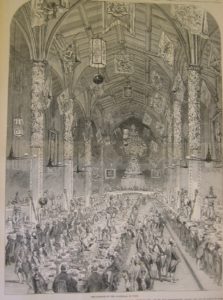
Royal Banquet at Guildhall York in front of H.R.H Prince Albert, on 25th October 1850
Besides cooking for Mr Lumley and The Royal Agricultural Show. On the 25th October, 1850 cooked a small banquet for 238 people, at the Guildhall, York. This was for the Lord Mayor of York, in attendance were other Lord Mayors, Mayors and businessmen from London and North England who were going to exhibit at Great Exhibition in 1851 also, Prince Albert himself. Alexis spent 3 days decorating the hall. By now it had become known that on such banquets Alexis would have a signature dish. This time it was a special pie that was served to Prince Albert’s table. This quickly became known as the 100-guinea pie, as that was the cost to make it, it contained 5 turtle heads and 309 assorted birds.
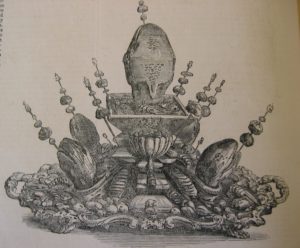
The 100 guinea pie presented to H.R.H Prince Albert at York Guildhall.
Besides the banquets and the promoting of the Magic Stove, Alexis was also promoting his last book ‘The Modern Housewife’. It was in its sixth reprint and would go on to sell 250,000 copies outselling Charles Dickens. As well as his book he was also promoting his sauce ‘Relish’. There was a reason Alexis was working so hard was money. Alexis next idea was that he wanted to open a restaurant in London, the likes that no one had seen before. To that aim, he went into partnership with Joseph Feeny of Liverpool and in late December he signed a 6-month lease for Gore House for the sum of £600.

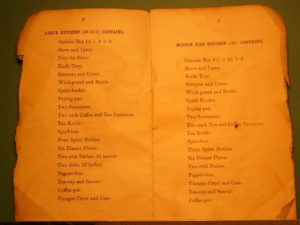


A leaflet that came with every Soyer’s Magic Stove



Sorry, the comment form is closed at this time.